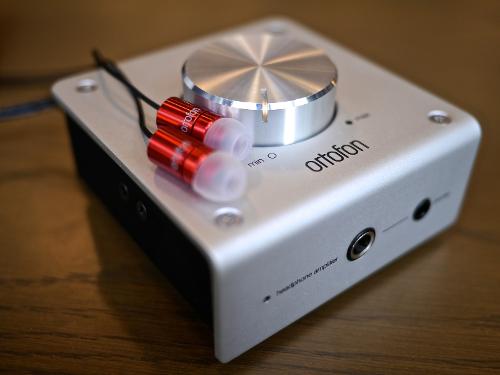
A few weeks ago, I met a very nice gentleman who was a distributor of this product. I had never heard of PSB let alone the M4U 2 and I was given the opportunity to demo this product. A very big thanks to John of Lenbrook Asia for this opportunity.


On The Head
Isolation - average. Maybe similar to the LP2 for my sized head. The Ed8s & Signature Pros isolate more. Whilst the clamping force though somewhat akin to the Ed8s & Signature Pros. It's weight on the head though is heavier than the aforementioned headphones.
The size of the earcups are just a tad small for my ears despite being circumaural. As such overall comfort-wise I'd probably feel its comfort to be less suitable for my head-size. But it may be more suitable for others with (smaller?) heads & ears.
Here's a picture showing the depth of the earpads.

Accessories
Absolute top knotch! Comes with 1/8"->1/4" plugs, airline converter jacks (very useful!), hard case, different cables (with phone capability), extra earpads, cleaning cloth, etc.
Features
Aside from the noise cancellation, it has an active & passive mode too (where passive mode can be used when the 2xAA battery drains). It also has dual jacks, one on each side of the earcup giving you flexibility which side you prefer your cable to fall on. I continually switched sockets on the earcups on the planes depending on which arm rest had the socket.


The cables don't tangle which is great, but they do have somewhat of a memory effect on how they were coil-stored. They're not microphonic though which is great.
The hinge also appears to be quite strong.


So how does it sound?
In Passive Mode
- personally, these didn't sparkle for me - but then again I've been coming from Fostex TH900's, FitEar To Go!334, Unique Melody Merlin's, etc. Having said that, passive mode appears to be a bonus feature anyway, not its main selling factor - its ability for continued use even after the batteries are drained. My understanding is other NC/Active headphones stop dead when the batteries are dead - not good for a long overhaul flight.
- although the SQ didn't sparkle for me, I still found acceptable detail in this mode. Bass extension is decent but not deep. By comparison. The TH900 & V-Moda range extends deeper. They're not warm (nor bright for that matter) by any means.
In Active Mode
- this is where the M4U 2 shines. I have to admit, I've always had a prejudice against double-amping but in this design, it seems to work quite well.
- just switching on active mode, the detail jumps up, bass extensions increase, & overall sounds quite dynamic.
- the trebles on the other hand didn't seem to extend further however, feels more brought forward.
- the soundstage perceives to be larger in active mode initially but flicking back & forth, at least to my ears, they're really the same. Its more the improvements in the aforementioned aspects seem to make one think the soundstage increases too.
- I seem to detect a hiss though (noise floor) when in active mode is enabled.
Noise Cancellation Activated
- This is another selling feature of these headphones. Especially with the amount of accessories that come with these headphones, (at least to me) it tends to target more for the traveller.
- the NC does (as with other NC headphones) cut out a certain range of frequencies so SQ is affected. Having said that, when I'm on a plane though, I don't mind so much...better than the low hum reverberating throughout the cabin.
- again as with most other NC headphones, it does create a "suction" feeling the ears, but by no means uncomfortable.
- on the plane, I actually used the NC feature quite a bit for watching in-flight movies more than for listening to music. So actually it's quite well suited for travel if it's the intent of the manufacturer to target travellers.


















